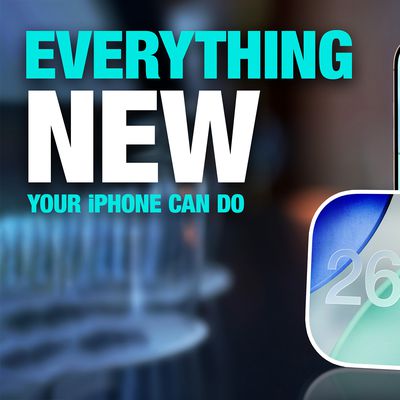Apple Adds High-End 15" Retina MacBook Pro to List of Macs Supporting Dell's 5K Display
 Apple has updated a support document on its website to reflect that the high-end 15-inch Retina MacBook Pro, equipped with AMD Radeon R9 M370X graphics, is capable of driving Dell's dual-cable UP2715K 27-inch 5K display. Apple initially released OS X 10.10.3 in April with support for the dual-cable 5K monitor on the Retina 5K iMac and 2013 Mac Pro, but no notebooks supported the display at the time.
Apple has updated a support document on its website to reflect that the high-end 15-inch Retina MacBook Pro, equipped with AMD Radeon R9 M370X graphics, is capable of driving Dell's dual-cable UP2715K 27-inch 5K display. Apple initially released OS X 10.10.3 in April with support for the dual-cable 5K monitor on the Retina 5K iMac and 2013 Mac Pro, but no notebooks supported the display at the time.
Dual-Cable Displays
Some displays with resolutions higher than 4K require two DisplayPort cables to connect the display at full resolution. With OS X Yosemite v10.10.3 or later, the Dell UP2715K 27-inch 5K display is supported on the following Mac computers:
Mac Pro (Late 2013)
iMac (Retina 5K, 27-inch, Late 2014 and later)
MacBook Pro (Retina, 15-inch, Mid 2015) with AMD Radeon R9 M370X
Dell's dual-cable 5K display requires more bandwidth than is currently supported over a current single DisplayPort cable, so it uses a dual-cable solution that takes up two Thunderbolt ports on a Mac. The availability of Intel's Skylake platform with DisplayPort 1.3 support later this year will enable Apple to update Macs with support for external 5K displays that function over a single cable, at which point the company could theoretically release a 5K Thunderbolt Display.
The support document also lists the high-end 15-inch Retina MacBook Pro as capable of driving most single-stream 4K displays (4,096-by-2,160) at 60Hz on OS X 10.10.3, becoming the first notebook to support single-stream 4K displays alongside the Mac Pro (Late 2013) and iMac (Retina 5K, 27-inch, Late 2014 and later).
Apple initially listed the high-end 15-inch Retina MacBook Pro with AMD Radeon graphics as capable of supporting an ultra-wide display with up to 5,120-by-2,160 resolution at 60Hz, but has since updated the notebook's technical specifications to reflect its ability to drive a single external display at up to 5,120-by-2,880 resolution at 60Hz.
Popular Stories
Google Maps on iOS quietly gained a new feature recently that automatically recognizes where you've parked your vehicle and saves the location for you.
Announced on LinkedIn by Rio Akasaka, Google Maps' senior product manager, the new feature auto-detects your parked location even if you don't use the parking pin function, saves it for up to 48 hours, and then automatically removes it once...
Apple has ordered 22 million OLED panels from Samsung Display for the first foldable iPhone, signaling a significantly larger production target than the display industry had previously anticipated, ET News reports.
In the now-seemingly deleted report, ET News claimed that Samsung plans to mass-produce 11 million inward-folding OLED displays for Apple next year, as well as 11 million...
Apple is about to release iOS 26.2, the second major point update for iPhones since iOS 26 was rolled out in September, and there are at least 15 notable changes and improvements worth checking out. We've rounded them up below.
Apple is expected to roll out iOS 26.2 to compatible devices sometime between December 8 and December 16. When the update drops, you can check Apple's servers for the ...
Apple seeded the second iOS 26.2 Release Candidate to developers earlier this week, meaning the update will be released to the general public very soon.
Apple confirmed iOS 26.2 would be released in December, but it did not provide a specific date. We expect the update to be released by early next week.
iOS 26.2 includes a handful of new features and changes on the iPhone, such as a new...
Apple is actively testing under-screen Face ID for next year's iPhone 18 Pro models using a special "spliced micro-transparent glass" window built into the display, claims a Chinese leaker.
According to "Smart Pikachu," a Weibo account that has previously shared accurate supply-chain details on Chinese Android hardware, Apple is testing the special glass as a way to let the TrueDepth...
Apple today seeded the second release candidate version of iOS 26.2 to developers and public beta testers, with the software coming one week after Apple seeded the first RC. The release candidate represents the final version iOS 26.2 that will be provided to the public if no further bugs are found.
Registered developers and public beta testers can download the betas from the Settings app on...
Apple's iPhone development roadmap runs several years into the future and the company is continually working with suppliers on several successive iPhone models at the same time, which is why we often get rumored features months ahead of launch. The iPhone 18 series is no different, and we already have a good idea of what to expect for the iPhone 18 Pro and iPhone 18 Pro Max.
One thing worth...
Apple's chipmaking chief Johny Srouji has reportedly indicated that he plans to continue working for the company for the foreseeable future.
"I love my team, and I love my job at Apple, and I don't plan on leaving anytime soon," said Srouji, in a memo obtained by Bloomberg's Mark Gurman.
Here is Srouji's full memo, as shared by Bloomberg:I know you've been reading all kind of rumors and...
Apple today released new firmware designed for the AirPods Pro 3 and the prior-generation AirPods Pro 2. The AirPods Pro 3 firmware is 8B30, up from 8B25, while the AirPods Pro 2 firmware is 8B28, up from 8B21.
There's no word on what's include in the updated firmware, but the AirPods Pro 2 and AirPods Pro 3 are getting expanded support for Live Translation in the European Union in iOS...
Wednesday December 10, 2025 12:22 pm PST by
Juli CloverThe next-generation low-cost iPad will use Apple's A19 chip, according to a report from Macworld. Macworld claims to have seen an "internal Apple code document" with information about the 2026 iPad lineup.
Prior documentation discovered by MacRumors suggested that the iPad 12 would be equipped with an A18 chip, not an A19 chip. The A19 chip was just released this year in the iPhone 17, and...
 Apple has updated a support document on its website to reflect that the high-end 15-inch Retina MacBook Pro, equipped with AMD Radeon R9 M370X graphics, is capable of driving Dell's dual-cable UP2715K 27-inch 5K display. Apple initially released OS X 10.10.3 in April with support for the dual-cable 5K monitor on the Retina 5K iMac and 2013 Mac Pro, but no notebooks supported the display at the time.
Apple has updated a support document on its website to reflect that the high-end 15-inch Retina MacBook Pro, equipped with AMD Radeon R9 M370X graphics, is capable of driving Dell's dual-cable UP2715K 27-inch 5K display. Apple initially released OS X 10.10.3 in April with support for the dual-cable 5K monitor on the Retina 5K iMac and 2013 Mac Pro, but no notebooks supported the display at the time.
























